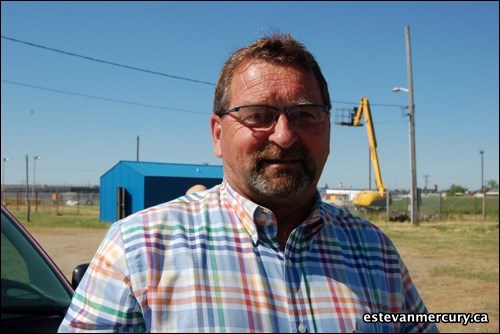A couple of southeast Saskatchewan producers pretty well typify the struggles that nearly all farmers and ranchers are experiencing in this part of the province heading into the shank of the summer season.
Randy Johner and Wes Mack know all about fighting the ravages of water, and they're not even directly downstream from the Rafferty and Boundary Dam reservoirs.
Johner operates a large family-based grain and oilseeds farm north of Macoun while Mack has a mixed farm, cow/calf business northwest of Estevan.
Johner states he and his team only got about 3,000 acres of crop in this spring and summer, which represented about 30 per cent of what he expected to seed this year and he figures at least one-half of that either didn't come up at all, or was drowned out, leaving them with about 1,500 acres to tend to. Right now he's spraying in the areas he can still get to, attempting to get a handle on a huge weed problem.
Mack, on the other hand, only got about 60 acres sown out of the 1,700 he expected to get down into the ground this spring and moving cattle has become an innovative experience.
"We did the spring castrating and loading right on the road before we sent them to pasture. It was a portable situation," Mack said, remarking on how everything went south on local farmers during the April 30, May 1 snow storm that saw many cattle companies lose a number of calves and some cows as the winds whipped them through fences and into further danger.
"The melting snow added to the already heavy runoff and then the rains came," he said.
"We seeded canola, durum and green peas. Couldn't get lentils in and we tried to keep seeding but it rained every day going into June so by June 10, we knew we were done as far as trying to seed was concerned," said Johner.
With water now rising to the five or six foot-level under the high-mounted sprayers that he's equipped with dual tires, Johner said it was now a matter of trying to control weeds with heavy applications while not getting stuck too often.
He said that once things do dry up a bit, farmers will have to look at doing a lot of cultivation work just to restore the black soil. The problem there is that tillage equipment isn't easy to come by these days since so many producers said goodbye to that kind of stuff with the advent of zero tillage practices.
Both men feel that the $70 per acre ($66.50 after the required deductions) insurance for unseeded or destroyed acreage will help a bit, but they're hoping the federal AgriRecovery program will also kick in because this is definitely going to be a lost cause year for producers in southeastern Saskatchewan.
"The provincial crop reports say that farmers in this region got 44 per cent of their crop in this year. I'd say in this immediate area it would be closer to five or 10 per cent," said Mack, who managed to get some wheat, canola, oats and barley in on those 60 to 80 acres.
Now that he's finally got his cattle in the pasture, he's wondering how he's going to get them home in the fall, especially if it rains some more.
"I don't know what we'll do next year. Any amount of snow this winter and we'll be back in the same situation," said Johner who says a lot of their land is now reduced to islands that are surrounded by water. He figures it will take three to five years for any decent recovery of productive farm land, even with ideal conditions. He's also well aware that seeded crops in the coming years will require at least a little rain, so he said he hoped that notes are being taken by someone, somewhere regarding land drainage opportunities, if there are any, and how it could be pulled off if it were possible.
"This water is not going away- it's here for the next three years I guess," said Johner, commenting on the five to six feet of current standing water and the land that was already saturated heading into the 2011 crop year.
"There are some pretty big bodies of water out here in the Macoun-Midale area and more out in the Benson-Lampman area," said Johner.
As far as Mack is concerned, he's checked with the veteran farmers and ranchers and they tell him this is an unprecedented situation that nobody has encountered before, so he too is hoping they won't have to see it again any time soon.
"Next year can be the real problem if we get a lot of snow. Weeds have taken over the crop land we had and we can't get a sprayer near them. Let's just hope for a dry fall," he said with a smile, suggesting that farmers are, after all, the eternal optimists.




